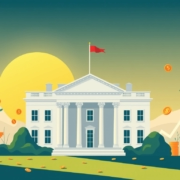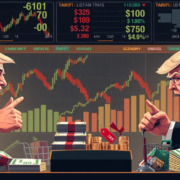How Trump Tariffs Are Driving U.S. Beef Prices to Record Highs: A Perfect Storm of Supply Chain Challenges
Trump Tariffs Contributing to Rising U.S. Beef Prices Amid Supply Chain Challenges
November 13, 2025 — Beef prices in the United States climb to new highs. Tariffs put in place during President Trump’s term push these prices up. Tariffs hit key markets and farming costs. This change adds to supply limits and pushes costs for both makers and buyers.
Tariffs Impact Beef Imports and Supply Chain
The trade rules put in place during the trade war add high tariffs on beef from top suppliers like Brazil, Australia, New Zealand, and Uruguay. Brazil stands as the world’s second-biggest producer and the top exporter. With a 76.4% total tariff rate on Brazilian beef, exports to the U.S. fall greatly in July and August.
Brazil now sends most of its beef to China. U.S. imports from Australia, New Zealand, and Uruguay also shrink because of these steep tariffs.
Dan Anthony, president of economic research firm Trade Partnership Worldwide, said, “When you add a 50% tariff on a major supplier like Brazil, importers may still buy and pass cost along, or they may stop buying. In both cases, you see the price rise, especially when new tariffs hit other key suppliers.”
Domestic Beef Supply Under Pressure
Beef prices rise when the U.S. cattle herd is near its smallest size in 75 years. Drought cuts down available grasslands and reduces cattle feed. Feed costs also rise after tariffs boost the price of imported fertilizers needed for corn and soybeans. Tariffs on steel and aluminum push up the cost of farm equipment like tractors and grain bins.
James Clement III, a sixth-generation Texas rancher, calls this one of the toughest cattle cycles in history. He points out that replacement heifers—the key to regrowing the herd—are at a 20-year low. He says rebuilding the herd needs time, grass, and rain. Cattle production takes longer and costs more when compared with other farming practices.
Political and Market Reactions
President Trump has blamed meat packers and cattlemen for the rising beef prices. At the same time, his team keeps raising tariffs that push prices up further. A deal to allow Argentine beef into the country made ranchers worry. Groups such as the National Cattlemen’s Beef Association say that Argentine beef could hurt U.S. rural producers without cutting prices much.
The U.S. Department of Agriculture sees the same strain from the shrinking cattle herd and starts new plans to bring more people into cattle farming. Meanwhile, the Bureau of Labor Statistics shows that uncooked beef prices have jumped by 12% to 18% over the past year as of September 2025.
Economist Peter Boockvar of OnePoint BFG Wealth Partners notes, “It is easy to place tariffs on foreign goods to protect local makers, but the consumer ends up bearing the cost. Then, people turn to cheaper meats, and local makers do not gain much.”
Additional Challenges: The Threat of New World Screwworm
US cattle ranchers also face a threat from the New World Screwworm. This parasitic fly was wiped out in the U.S. in 1966 but now appears again in Mexican cattle. The USDA led its largest trade trip to Mexico to work on ways to stop the fly. The pest could harm animal health and affect beef exports. It adds another hard link in the long chain that already strains beef supply.
Outlook for Ranchers and Consumers
Some ranchers, like James Clement, stick to their plans and invest in their work. They still see cattle as a long-term choice. The beef industry must balance changes such as drought, high input costs, tariffs, political doubt, and the risk of pests.
In sum, tariffs meant to shield local makers restrict foreign beef and push up costs. The overall impact makes beef prices stay high while demand holds firm.
For continued coverage on market changes and farm news, subscribe to CNBC PRO and join our Investing Club.
Data sourced in part from the U.S. Department of Agriculture, Bureau of Labor Statistics, and Panjiva trade analysis.
Full money-growing playbook here:
youtube.com/@the_money_grower









